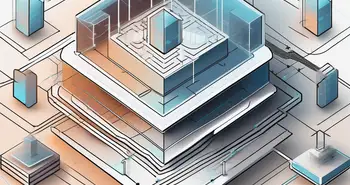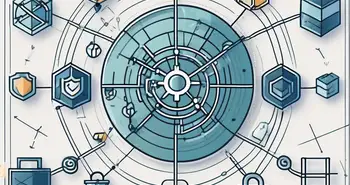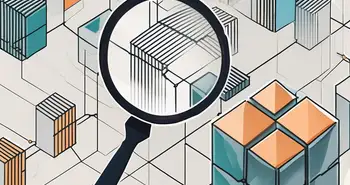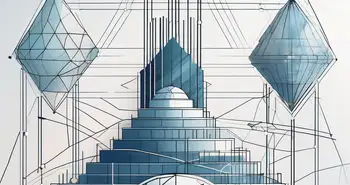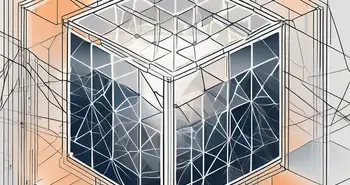Layer 1 vs Layer 2 Blockchain: Understanding the Key Differences
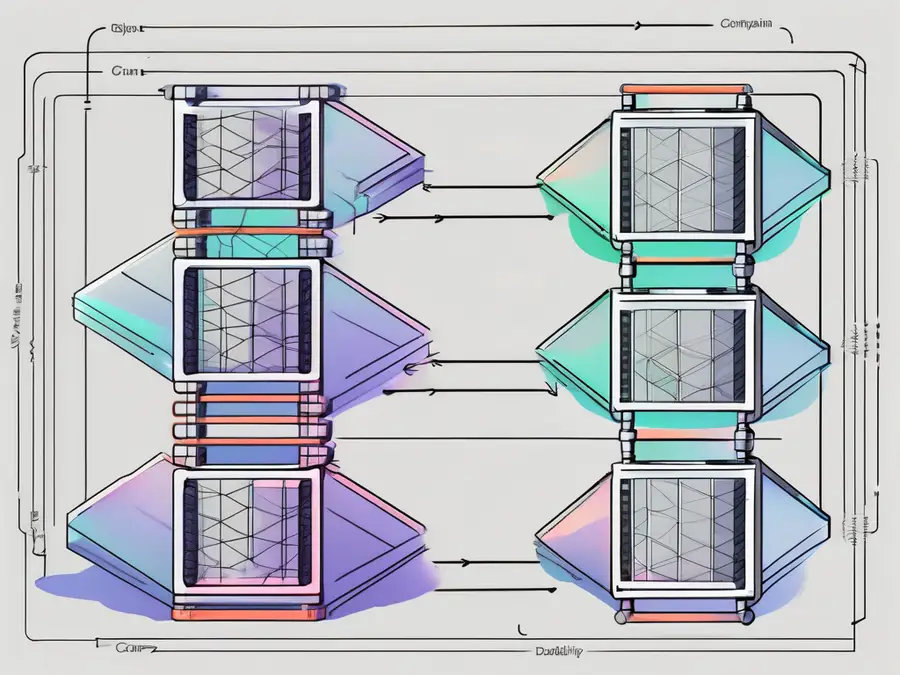
As a blockchain expert, I am often asked about the differences between Layer 1 and Layer 2 blockchain. To help you navigate this complex subject, I will break down the key concepts and highlight the important distinctions between these two layers.
Understanding Blockchain Technology
Before we dive into the differences between Layer 1 and Layer 2 blockchain, let's take a moment to understand the basic concept of blockchain technology. Blockchain is a decentralized digital ledger that securely records and verifies transactions across multiple computers. It provides transparency, immutability, and security, making it an ideal solution for various industries.
The Concept of Blockchain
Blockchain consists of blocks of data that are chronologically linked, forming a chain. Each block contains a unique identifier, a timestamp, and a list of transactions. Once a block is added to the chain, it becomes nearly impossible to alter or tamper with the information within it.
Imagine a scenario where you want to send money to a friend who lives in a different country. Traditionally, you would rely on intermediaries such as banks to facilitate the transfer. However, with blockchain technology, you can directly transfer funds to your friend's digital wallet without the need for intermediaries. This eliminates the delays and fees associated with traditional banking systems.
Importance of Blockchain Layers
Blockchain layers are necessary to enhance and accommodate the growing needs of the technology. Layer 1 and Layer 2 blockchain are two distinct layers that serve different purposes and offer unique features.
Layer 1 blockchain, also known as the base layer, is the foundation of the blockchain network. It handles the core functionalities of transaction validation and consensus. Bitcoin and Ethereum are examples of Layer 1 blockchains. These blockchains prioritize security and decentralization, but they have limitations in terms of scalability and transaction speed.
Layer 2 blockchain, on the other hand, is built on top of Layer 1 and aims to address the scalability issues. It provides additional features and functionalities while leveraging the security of the underlying Layer 1 blockchain. Layer 2 solutions, such as the Lightning Network for Bitcoin and the Raiden Network for Ethereum, enable faster and cheaper transactions by processing them off-chain.
By implementing Layer 2 solutions, blockchain networks can achieve higher transaction throughput and improved scalability without compromising security. These layers work in harmony, with Layer 1 providing the foundational security and Layer 2 enhancing the network's performance.
Defining Layer 1 Blockchain
Layer 1 blockchain, also known as the base layer or the main chain, is the foundation of the blockchain ecosystem. It includes popular blockchain platforms like Bitcoin and Ethereum. Layer 1 blockchains handle the core functionalities of transaction validation, consensus mechanisms, and security protocols.
Features of Layer 1 Blockchain
Layer 1 blockchains have several defining features. Firstly, they provide maximum security due to their robust consensus algorithms. Additionally, Layer 1 blockchains have their own native tokens and support decentralized applications (DApps).
Moreover, Layer 1 blockchains are highly decentralized, as they require a large network of nodes to validate transactions and maintain consensus. This decentralization ensures that power is distributed among network participants and prevents any single entity from controlling the entire network.
Pros and Cons of Layer 1 Blockchain
Layer 1 blockchain offers several advantages. It provides a high level of security and trust, making it suitable for financial applications and sensitive data storage. Layer 1 blockchains are also well-established and have a strong network effect, making them reliable and widely adopted.
However, Layer 1 blockchains face challenges when it comes to scalability and transaction throughput. Due to their decentralized nature and consensus mechanisms, Layer 1 blockchains can only handle a limited number of transactions per second.
Exploring Layer 2 Blockchain
Layer 2 blockchain, as the name suggests, builds upon Layer 1 and aims to address the scalability limitations of the base layer. It is designed to process transactions more efficiently and improve the overall performance of blockchain networks.
Characteristics of Layer 2 Blockchain
Layer 2 blockchains operate on top of Layer 1 blockchains and leverage their security and consensus mechanisms. They introduce new techniques or protocols that enable faster and cheaper transactions, without compromising security or decentralization.
Layer 2 solutions often utilize off-chain channels or sidechains to facilitate faster transaction processing. These channels enable participants to execute transactions among themselves, reducing the workload on the main chain and alleviating congestion.
Advantages and Disadvantages of Layer 2 Blockchain
Layer 2 blockchain offers significant advantages in terms of scalability and transaction throughput. By moving a portion of the transaction traffic off-chain, Layer 2 solutions can handle a much higher volume of transactions per second, making them suitable for applications that require fast and frequent transactions, such as micropayments or decentralized finance (DeFi).
However, Layer 2 blockchain comes with its challenges. Implementing and integrating Layer 2 solutions with existing Layer 1 blockchains can be complex and requires careful planning. Additionally, the security of Layer 2 solutions heavily relies on the security of the underlying Layer 1 blockchain.
Key Differences Between Layer 1 and Layer 2 Blockchain
Let's now compare the key differences between Layer 1 and Layer 2 blockchain in terms of performance and speed, security aspects, and scalability factors.
Performance and Speed
Layer 1 blockchain is known for its strong security guarantees, but it sacrifices transaction speed for this level of security. On the other hand, Layer 2 blockchain solutions prioritize transaction speed and can process transactions at a much faster rate by offloading some of the workload from the main chain.
Security Aspects
Layer 1 blockchain offers maximum security due to its decentralized nature and robust consensus mechanisms. Layer 2 blockchain solutions rely on the security provided by the underlying Layer 1 blockchain, making them vulnerable to any security breaches or attacks on the base layer.
Scalability Factors
Scalability is a major concern for blockchain networks, and both Layer 1 and Layer 2 solutions aim to address this issue. Layer 1 blockchains face scalability limitations due to their decentralized nature, while Layer 2 solutions overcome these limitations by offloading transactions to sidechains or off-chain channels.
Choosing Between Layer 1 and Layer 2 Blockchain
When it comes to choosing between Layer 1 and Layer 2 blockchain, it depends on the specific requirements of your business or development project.
Considerations for Businesses
If security and trust are your top priorities, Layer 1 blockchain is the way to go. Layer 1 blockchains offer the highest level of security and are well-established in the industry. However, if your application requires high transaction throughput and scalability, Layer 2 solutions might be more suitable.
Considerations for Developers
As a developer, you must carefully evaluate the trade-offs between security, transaction speed, and scalability when choosing between Layer 1 and Layer 2 blockchain. Consider the specific requirements of your project and weigh the advantages and disadvantages of each layer to make an informed decision.
From my personal experience, I would advise businesses to consider their long-term goals and scalability needs. While Layer 1 blockchain provides maximum security, Layer 2 solutions can offer significant improvements in transaction speed and scalability, making them suitable for applications that require high-volume and low-cost transactions.
FAQ
What is blockchain technology?
Blockchain technology is a decentralized digital ledger that securely records and verifies transactions across multiple computers. It provides transparency, immutability, and security, making it ideal for various industries.
What is Layer 1 blockchain?
Layer 1 blockchain, also known as the base layer or the main chain, is the foundation of the blockchain ecosystem. It handles the core functionalities of transaction validation, consensus mechanisms, and security protocols.
What is Layer 2 blockchain?
Layer 2 blockchain builds upon Layer 1 and aims to address the scalability limitations of the base layer. It processes transactions more efficiently and improves the overall performance of blockchain networks.
What are the key differences between Layer 1 and Layer 2 blockchain?
The key differences between Layer 1 and Layer 2 blockchain include performance and speed, security aspects, and scalability factors. Layer 1 provides maximum security but sacrifices transaction speed, while Layer 2 solutions prioritize transaction speed by offloading some workload from the main chain.
How to choose between Layer 1 and Layer 2 blockchain?
The choice between Layer 1 and Layer 2 blockchain depends on the specific requirements of your business or development project. Consider factors such as security, transaction speed, and scalability to make an informed decision.
What is your personal advice as a blockchain expert?
Based on my expertise, I would advise businesses to consider their long-term goals and scalability needs when choosing between Layer 1 and Layer 2 blockchain. While Layer 1 blockchain provides maximum security, Layer 2 solutions offer significant improvements in transaction speed and scalability.
By understanding the key differences between Layer 1 and Layer 2 blockchain, you can make an informed decision that aligns with your business or development needs. Whether it's prioritizing security or optimizing transaction speed, both layers present unique opportunities and challenges in the blockchain landscape. Keep exploring and stay ahead in this constantly evolving technology.
As you consider the advantages of Layer 1 and Layer 2 blockchain technologies for your investment strategies, explore the innovative trading platform at Morpher.com. With its blockchain-based approach, Morpher offers a unique trading experience that aligns perfectly with the scalability and efficiency of Layer 2 solutions. Enjoy zero fees, infinite liquidity, and the ability to trade a diverse range of assets, from cryptocurrencies to unconventional markets. Experience the control and safety of the non-custodial Morpher Wallet, and take advantage of up to 10x leverage to amplify your trades. Ready to transform your trading experience? Sign Up and Get Your Free Sign Up Bonus at Morpher today, and join the future of investing.

Disclaimer: All investments involve risk, and the past performance of a security, industry, sector, market, financial product, trading strategy, or individual’s trading does not guarantee future results or returns. Investors are fully responsible for any investment decisions they make. Such decisions should be based solely on an evaluation of their financial circumstances, investment objectives, risk tolerance, and liquidity needs. This post does not constitute investment advice.

Painless trading for everyone
Hundreds of markets all in one place - Apple, Bitcoin, Gold, Watches, NFTs, Sneakers and so much more.

Painless trading for everyone
Hundreds of markets all in one place - Apple, Bitcoin, Gold, Watches, NFTs, Sneakers and so much more.

